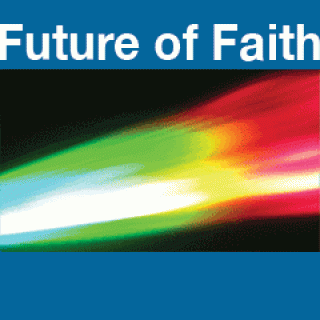A Bridge to Nowhere - Part A #FoF
By Carey McDonald

Future_of_Faith
Choosing religious affiliation matters
Having looked at Unitarian Universalism’s role among American faiths, one aspect to address carefully is how our identity as a religion of converts relates to the youth that grow up in our churches. I have heard UU’s criticize our churches countless times for losing 9 out of 10 youth who are raised UU, an inversion of the 90% conversion statistic mentioned in the previous post. This is a misleading conclusion for a number of reasons. First, these two estimates are not mathematically equivalent, and do not take into account the normal membership churn of our churches, who seem to have a fair number of people both coming into and exiting from our faith each year. Second, as we highlighted in the first post, most Americans today are leaving the church of their childhood, so the fact that UU’s have a retention issue (which is clearly a serious problem) may be a broader feature of religious institutions in this country. Most importantly, while official “membership” numbers have been relatively flat over the past decade, the number of Americans who claim to be UU has risen 27% since 1990.[1] This would be consistent with adding a few thousand young adult UU’s each year, a reasonable estimate of the number of graduates that would be generated from our religious education annual enrollment estimates of 50,000-60,000. As UU’s, we count our official members in a uniquely limited way that systematically excludes those who are often at the periphery of our congregations, like our youth and young adults; while other faiths refer to average weekly attendance, or the number of families in the parish, UU’s insist on using certified congregational members as our primary definition of the size of our faith. Since these figures are also used to determine congregational dues to the Association, there is a clear incentive to keep these numbers low. My guess is that, overall, our footprint in American culture is increasing, even if that translates into uneven growth in the vitality of our religious communities so that some are shrinking and others blossoming.[2] The difference between those who identify themselves as UU’s and our official membership counts, which inspired UUA President Peter Morales’ Congregations and Beyond initiative,[3] says to me that we are actually pretty good at instilling a faithful identity, even though our churches may not feel as if they put these lofty ideals in practice, and our failure hold onto the youth that were steeped in those values is related to the disconnect between our stated values and the actual experience of being an adult member in one of our congregations.[4] Our leaders have worked diligently over the past few years to better integrate our youth into the heart of our faith communities by enacting the multigenerational, multicultural recommendations of publications like Full Circle: Fifteen Ways to Grow Lifelong UUs.[5] Research through the National Study on Youth and Religion has shown that high school students who retain their faith into adulthood tend to have strong intergenerational relationships with adults, the expectation of faithful practice at home, and memorable personal experiences.[6] Unitarian Universalism has offered memorable experiences for our youth through groups, camps and conferences, and we have gotten better at intergenerational relationships in the past few years as our faith has embraced multigenerational ministry; however, my impression is that we have a long way to go in faith practice at home. As a religion of converts, many of our parents have arrived in our congregations with a general suspicion of religion and have been reluctant to establish diligent spiritual practices with their children. [7] Parent devotion is a huge determinant of a child’s retention,[8] though inherited religious affiliation may soon be surpassed by individual choice in its impact on religious participation.[9][1] http://commons.trincoll.edu/aris/files/2012/05/unitarians9008.pdf [2] http://www.washingtonpost.com/national/on-faith/unitarian-universalists-see-chance-for-growth-in-growth-of-secularism/2012/10/04/e2e4adae-0e4e-11e2-ba6c-07bd866eb71a_story.html [3] http://www.uua.org/uuagovernance/officers/president/morales/192145.shtml [4] I preached a sermon on this dynamic called “The Pilgrims, the Road and the Path”, available here for download (Track 8): http://www.uucsr.org/sermon/129917594636092970___Pilgrims%20Road%20and%20Path%209-9-12.zip [5] http://www.uuabookstore.org/productdetails.cfm?PC=681 [6] [6] (Smith, Herzog http://www.lifelongfaith.com/uploads/5/1/6/4/5164069/lifelong_faith_journal_4.2.pdf pg 14) [7] It seems ironic when I hear my UU professional colleagues bemoan parents who object to our churches instilling our children and youth with a UU identity because they do not want their child to feel “pressured,” no doubt reflecting the dissonance of their own adolescent experience. Not only is creating a lasting identity a valuable strength of ours as UUs, but contemporary American society has no problem driving home the freedom of religious choice even without our assistance. [8] Smith, http://www.youthandreligion.org/ [9] Putnam, Campbell (2010). Pg. 158.